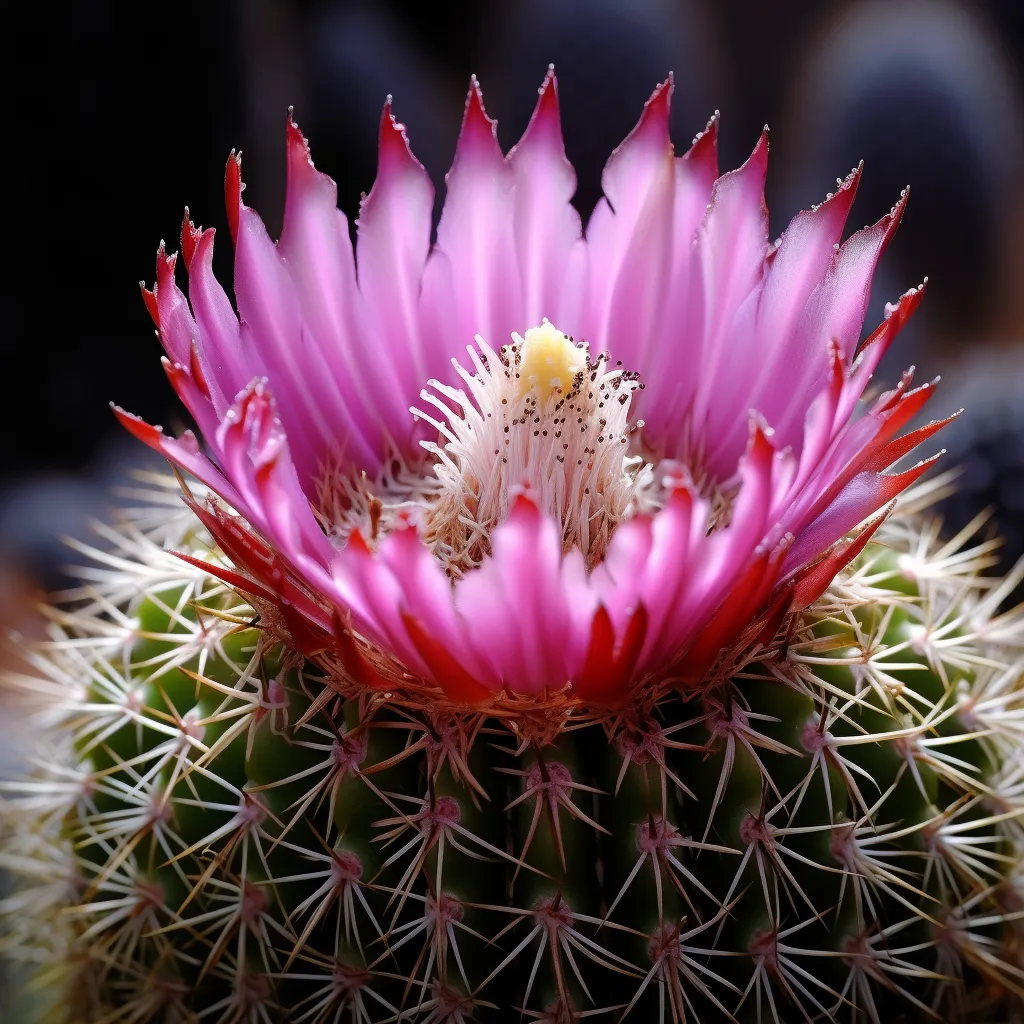Story of Day :
Contents
Echinocereus Subinermis Plant Care Tips
Are you ready to add some prickly beauty to your garden? Look no further than the Echinocereus subinermis, also known as the unarmed echinocereus.
This unique cactus is sure to make a statement with its vibrant flowers and fascinating growth patterns.
In this article, we will provide you with all the necessary tips and tricks for successfully caring for your Echinocereus subinermis plant.
Light Requirements
One of the most important factors in growing a healthy Echinocereus subinermis plant is providing it with adequate sunlight.
These cacti thrive in bright, indirect light and should be placed near a window or in an area of your garden that receives full sun.

If you live in an area with harsh afternoon sun or intense heat, it’s best to provide some shade during peak hours to prevent scorching.
A sheer curtain or planting your cactus under taller plants can offer just enough protection without blocking out all the sunlight.
Watering Frequency
The watering needs of Echinocereus subinermis plants are quite different from those of traditional houseplants.
These desert dwellers prefer infrequent but deep waterings rather than regular shallow ones.
A good rule of thumb is to water your unarmed echinocactus thoroughly once every two weeks during the growing season (spring and summer).
Allow the soil to dry out completely between each watering session.
Be careful not to overwater as excessive moisture can lead to root rot.

During the dormant period (fall and winter), reduce watering to once a month or even less.
The cactus will naturally slow down its growth during these months, and too much moisture can cause problems.
Soil Requirements
The right soil mix is crucial for the health of your Echinocereus subinermis plant.
These cacti require well-draining soil that mimics their natural habitat in rocky desert areas.
A mix of regular potting soil, coarse sand, and perlite or pumice works well for Echinocereus subinermis plants.
This combination ensures excellent drainage while also providing some nutrients to support growth.

Temperature and Humidity
Echinocereus subinermis plants are adapted to hot and dry climates, so they prefer warm temperatures ranging from 70°F to 90°F (21°C to 32°C).
They can tolerate temperature drops at night but should be protected from frost at all costs.
- During the colder months, it’s best to bring your unarmed echinocactus indoors or provide proper insulation if you live in an area with freezing temperatures.
- In terms of humidity, these cacti thrive in low-humidity environments.
They do not require any additional humidity measures as long as they are kept away from overly damp areas.
Fertilizing Needs
Echinocereus subinermis plants do not require heavy fertilization but can benefit from a light feeding during the growing season.
Use a balanced fertilizer formulated specifically for cacti and succulents diluted according to package instructions.
Apply the fertilizer once every two to three months and reduce or stop feeding entirely during the dormant period.
Pests and Diseases
Echinocereus subinermis plants are generally resistant to pests and diseases, but it’s always good to keep an eye out for any potential issues.
Some common problems include:
- Mealybugs: These small white insects can infest your cactus, causing damage if left untreated.
Remove them manually with a cotton swab dipped in rubbing alcohol or use an insecticidal soap.
- Fungal diseases: Overwatering or high humidity levels can lead to fungal infections.
Ensure proper watering practices and provide adequate ventilation.
- Sunburn: If exposed to intense sunlight without acclimatization, Echinocereus subinermis plants can suffer from sunburn.
Gradually introduce your cactus to direct sunlight by increasing exposure time over a few weeks.
In Conclusion

Caring for an Echinocereus subinermis plant requires attention to its unique needs but is ultimately a rewarding experience.
With the right balance of light, water, soil, temperature, and occasional feeding, you’ll be able to enjoy this prickly beauty’s vibrant blooms for years to come!